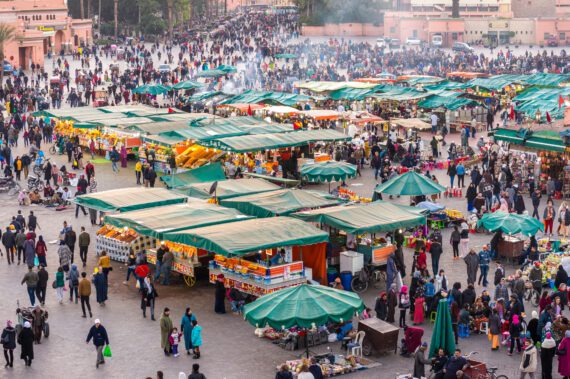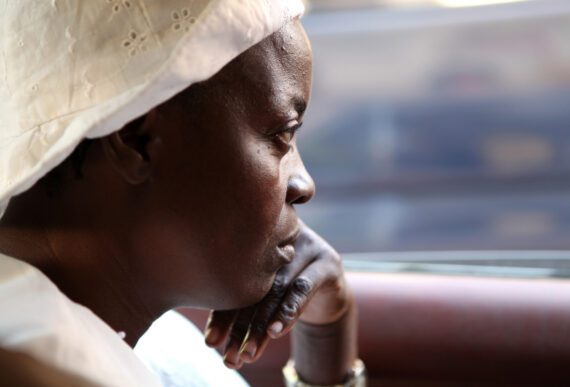By Syeda Lamia Hossein
“Resilience” is both a powerful concept and an increasingly familiar term in international development, where organizations often mention resilience-focused policies, frameworks, and strategies.
Why build resilience? The goal is, broadly, to enable and equip people, including those in the most marginalized groups of their society, to cope with what the future brings. In practice, building resilience serves to make people less vulnerable to shocks, whether natural disasters, economic recessions, or any of a host of other problems in human life.
Bread for the World emphasizes that in order to end hunger for good, everyone needs workable ways of feeding themselves and their children when the unexpected becomes reality. Some of these “plan Bs, Cs, and Ds” are individual or family strategies. Examples might be keeping supplies on hand to produce a different food crop if the first one is failing, or developing a skill such as sewing that can supplement one’s income if needed. Other strategies are community-based or nationwide, ranging from neighborhood food pantries and community cooperatives to crop insurance and free school meals. Strategies at both the individual and society levels are needed.
Government or donor-supported programs to strengthen resilience are usually aimed at people who have few options open to them. They have done little or nothing to generate greenhouse gas emissions or support the rise of armed factions—but this also means that they have little or no power to spur broad, transformative solutions. For families and communities, developing resilience often comes down to making the best possible use of the resources available and trying to find ways of accessing additional resources.
Resilience may look quite different in different contexts. The most pressing problems and the most promising paths forward may change over time. Global organizations, donor countries, and international nongovernmental organizations (NGOs) often have specific goals and priorities for their resilience programs.
The United Nations’ definition strives to be complete. In addition to listing the parties that may be involved and verbs that describe their efforts— “the ability of individuals, households, communities, cities, institutions, systems, and societies to prevent, resist, absorb, adapt, respond, and recover positively, efficiently, and effectively”—the UN definition also names some conditions that define success. These include “when faced with a wide range of risks,” “while maintaining an acceptable level of functioning,” and “without compromising long-term prospects for sustainable development, peace and security, human rights and well-being for all.”
But where does the world stand in building resilience today? Bread has often discussed the 17 Sustainable Development Goals (SDGs) that were adopted in 2015 by nearly every country. Goal 2 is to end hunger as well as malnutrition in all its forms. Efforts to enable people to build resilience embody the key SDG principles of “leave no one behind” and “reach the farthest behind first.” The deadline to meet the goals is 2030.
But since the SDGs were adopted, the world has seen new armed conflicts break out, more widespread and severe climate change impacts, and a global pandemic that led to a near-complete shutdown of the global economy. Conflict, climate change, and economic shocks are the leading causes of hunger today. The Sustainable Development Goals Report 2023 describes the status of the goals as “Promise in Peril.” If current trends continue, the SDG deadline of 2030 will arrive with more than 600 million people still facing hunger and a similar number, 575 million, still living with extreme poverty.
At Bread, we believe access to nutritious food with dignity is a human right. The keys to building resilience are effective systems, structures, and policies that affirm equality and advance equity among all people. The U.N. Food and Agriculture Organization (FAO) describes what resilience means when applied to food and agriculture . It includes “protecting, restoring, and improving livelihoods systems in the face of threats that impact agriculture, nutrition, food security, and food safety.”
Bread emphasizes the need to incorporate efforts to enable people to build resilience into emergency humanitarian assistance. This is because considering these as part of development assistance, to be added later, can mean neglecting early actions that will help people begin to rebuild their lives a few weeks or months later. Bread also focuses on sustainable solutions that respect the agency of individuals. It is important, for example, that people have what they need to begin or resume growing their own food.
One example applicable to many pastoralist groups in Central and East Africa is the importance of providing “emergency livestock assistance” along with humanitarian assistance. In Kenya, an estimated 1.5 million cows, sheep, and goats died in the latter part of 2021 alone, mainly due to drought. Each is the loss of a valuable resource to a family. It is far more expensive to buy new animals than it is to supply the basic needs of those already there, and it is much harder for a family that has been displaced to start over and rebuild their lives without their animals.
There is much more to say about strengthening resilience—what people in different situations identify as their priorities, what has and has not worked well for different groups who have been facing hunger emergencies, how U.S. and global financial support for “resilience” has been affected by other types of policies, and more. Please stay tuned for discussions of additional key questions.
Syeda Lamia Hossein is a global hunger fellow, Policy and Research Institute, with Bread for the World.



